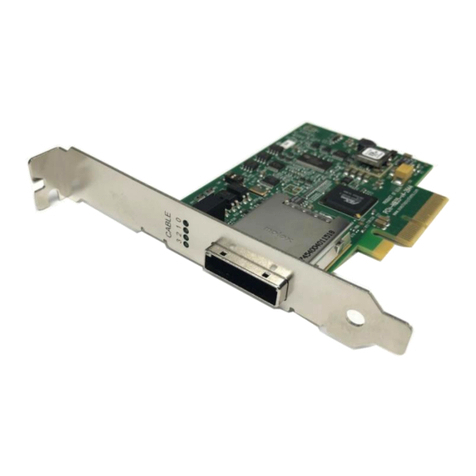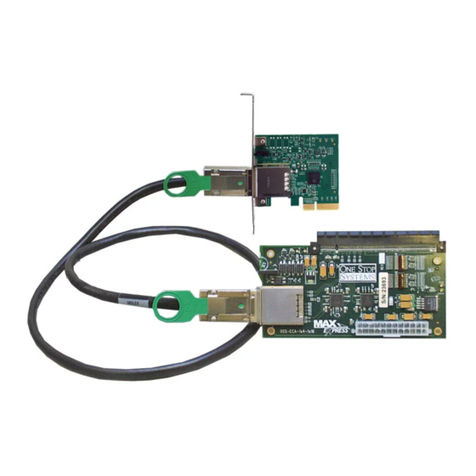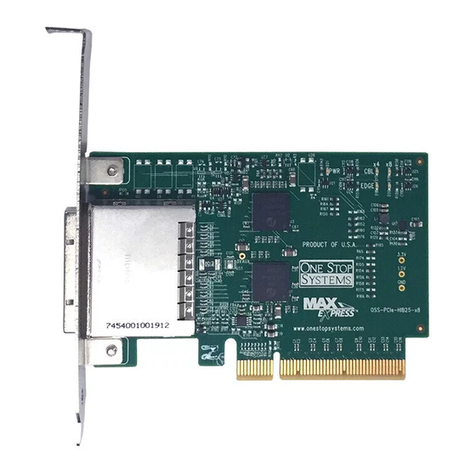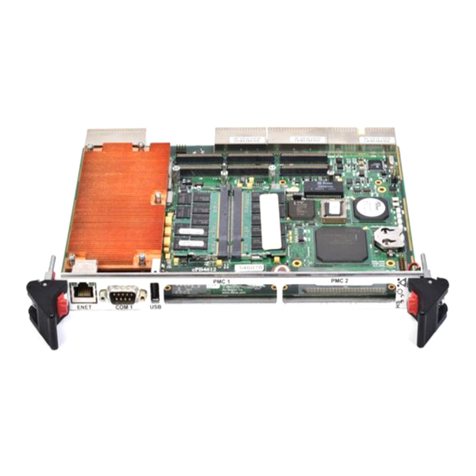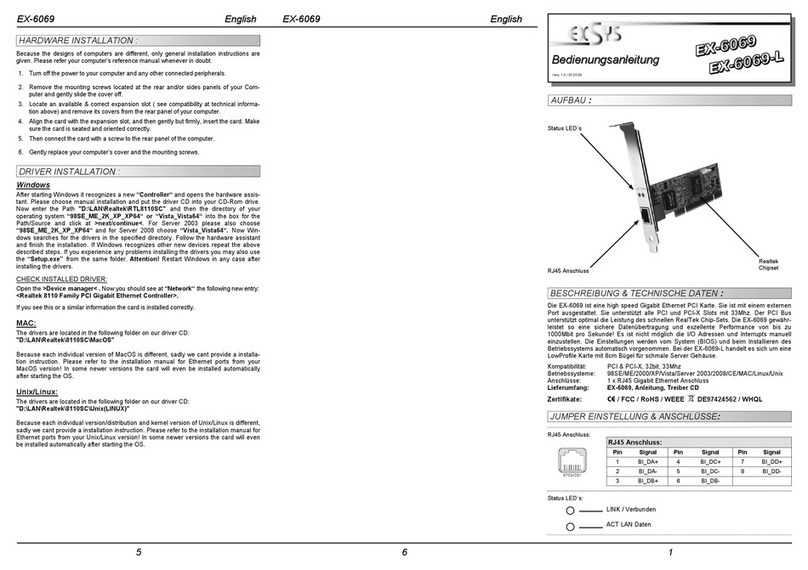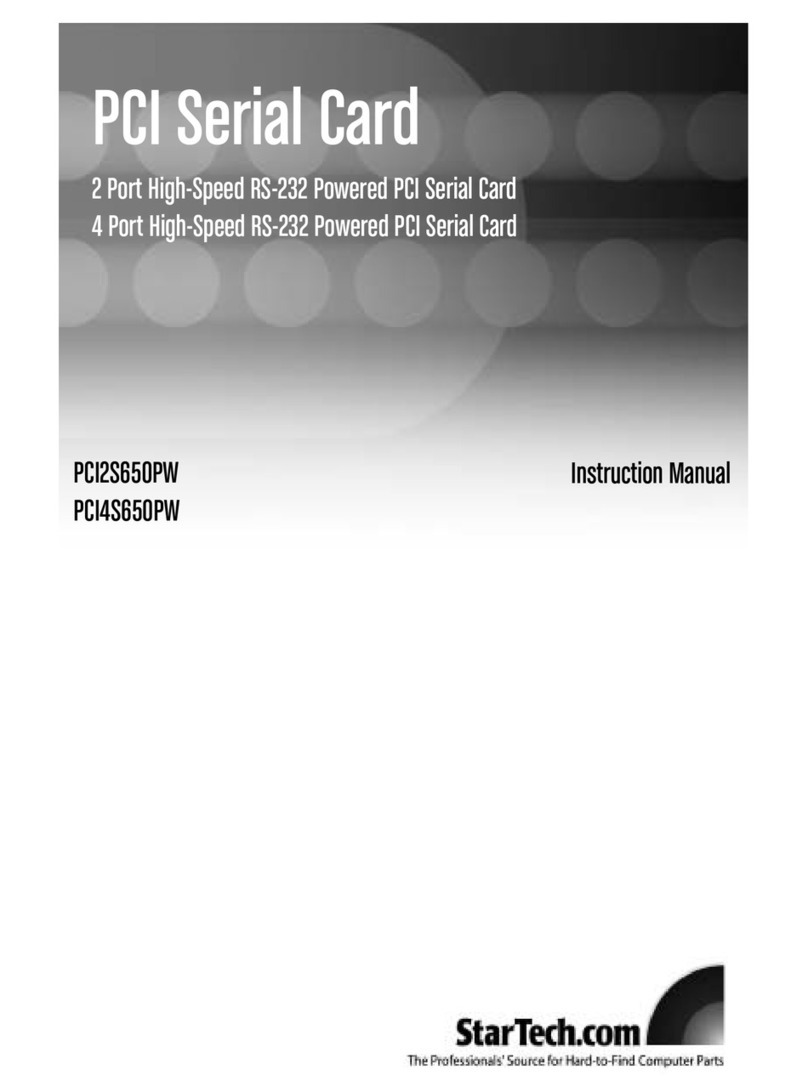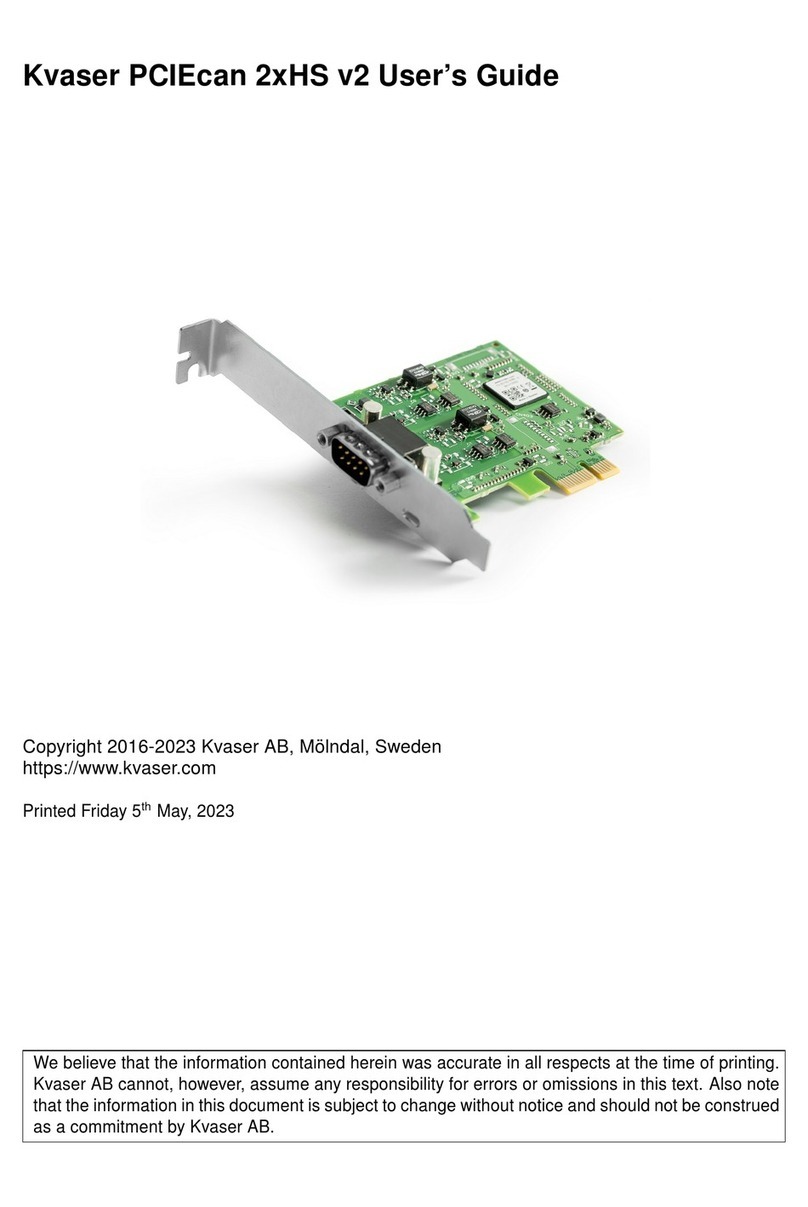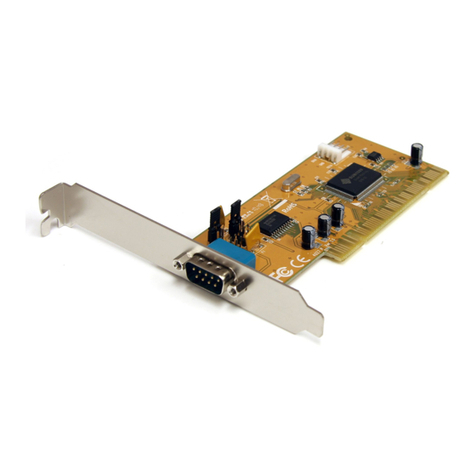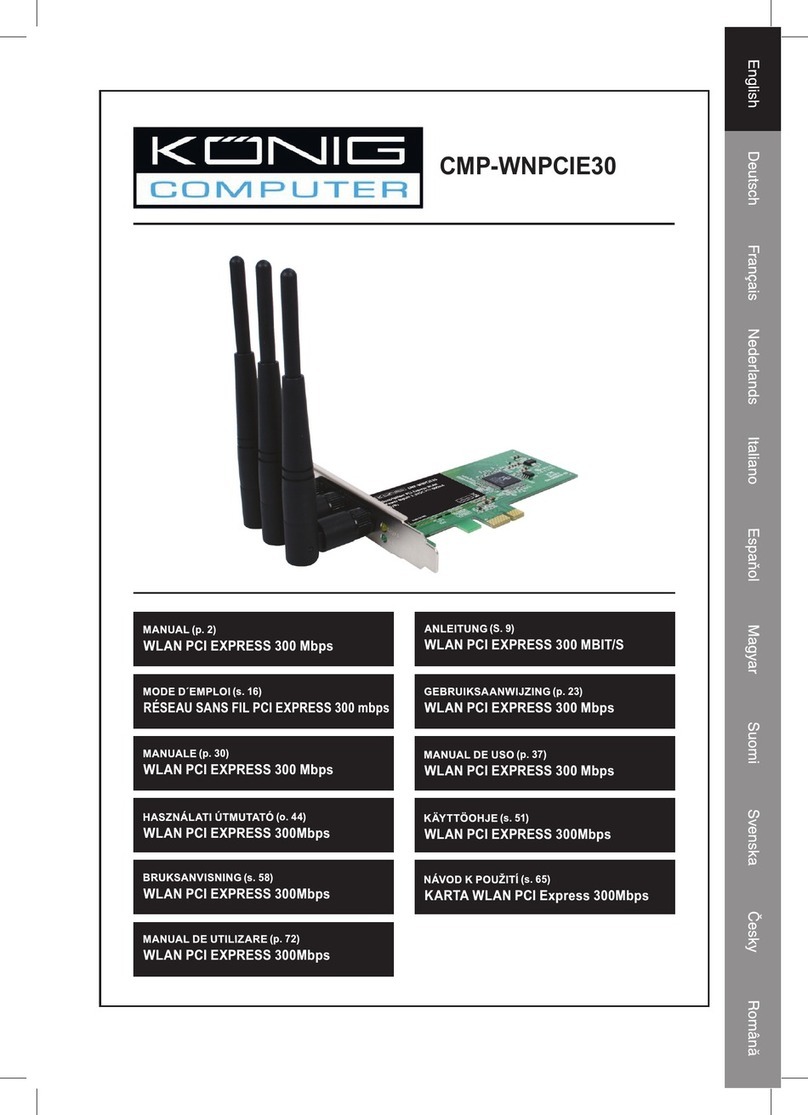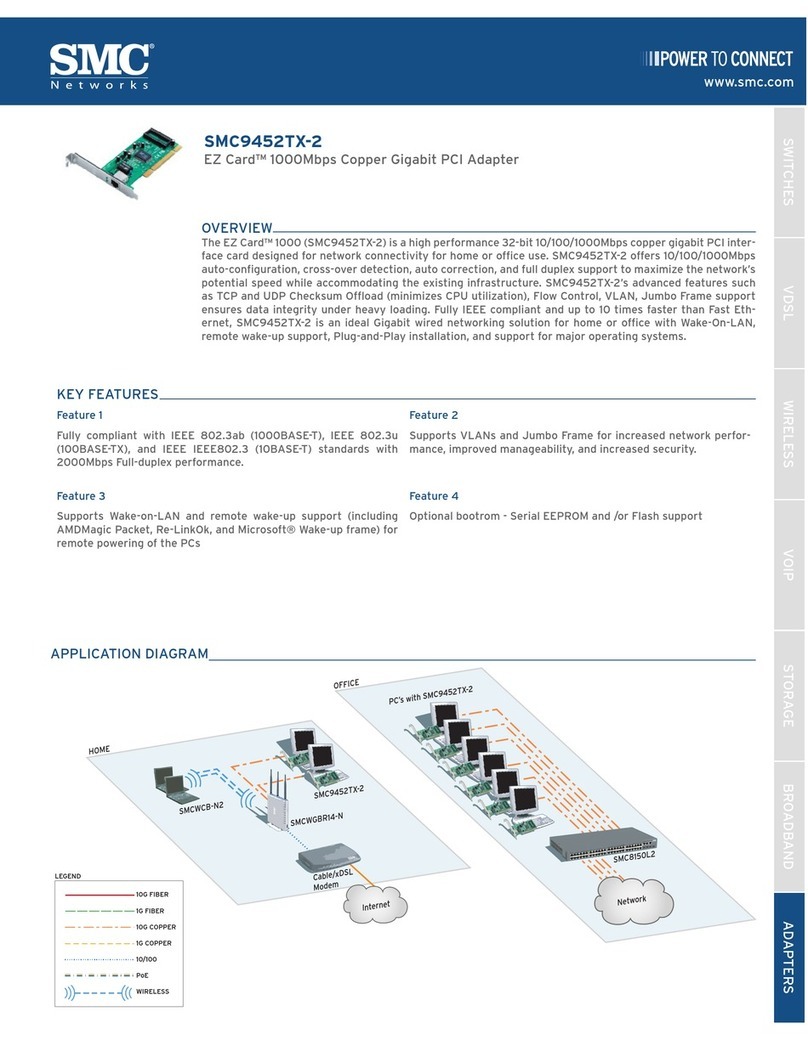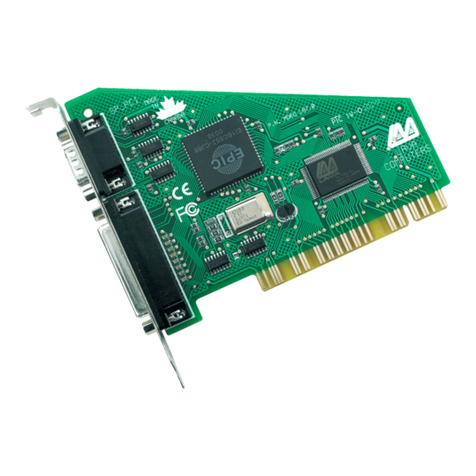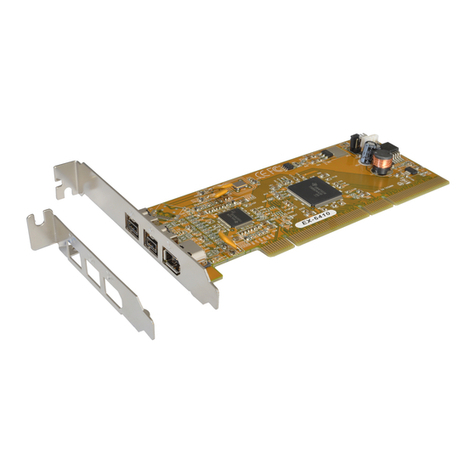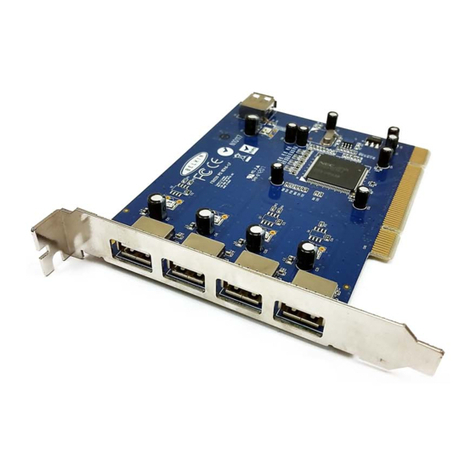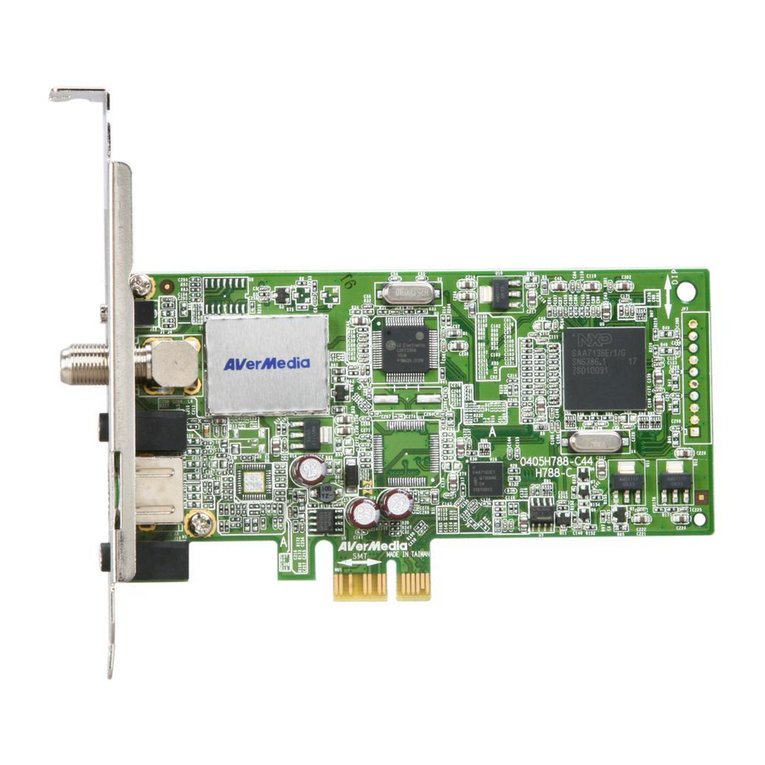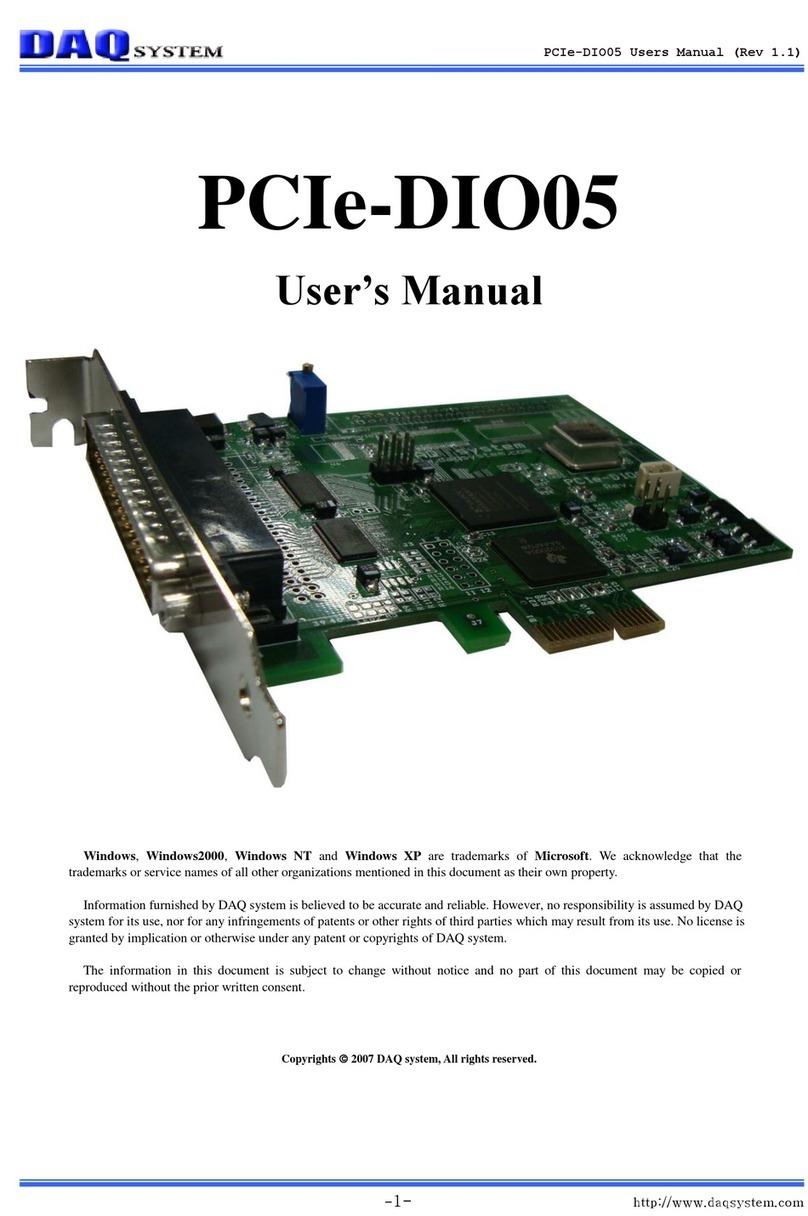OSS OSS-PCIe-HIB25-x16 User manual

PCIe x16 Gen2 Host Cable Adapter
Model: OSS-PCIe-HIB25-x16
www.onestopsystems.com
Installation Guide
SKU: OSS-PCIe-HIB25-x16

One Stop Systems
OSS-PCIe-HIB25x16| 2
Table of Contents
Preface 4
Advisories 4
Safety Instructions 5
1 Introduction 7
1.1 Specifications 7
1.2 Features: 7
1.3 Overview 8
1.4 PCIe Card Edge 9
1.5Power 9
1.6 PCIe Cable Sideband signals 9
1.7 Pericom PI2EQX5804 9
1.8 Link LEDS 9
1.9 Board LEDs 10
1.10 Block Diagram 10
1.11 Signal Direction 11
1.12 Dimensions 11
1.13 Operating Mode 12
1.13.1 Host Mode 12
1.13.2 Target Mode 12
1.14 Card Edge Connector Pin Outs 13
1.15 x16 Cable Connector (Downstream / Upstream) 15
1.16 x8 Cable Signal Descriptions 15
2 Hardware Requirements 16
2.1 Hardware & System Requirements 16
2.1.1 HIB25-x16 Host and Target Cards 16
2.1.2 PCIe Slot & Motherboard Requirement 16
2.1.3 x16 iPass Cable 16
2.1.4 Expansion Chassis / backplanes 17
2.1.5 ATX Power Supply 17
2.2 Software Requirement 17
3 Installation Procedures 18
3.1 Check HBA cards to use 18
3.2 Install Host card 18
3.3 Install Target card 19
3.4 Install PCIe card 20
3.5 Install x8 iPass cable 20

One Stop Systems
OSS-PCIe-HIB25x16| 3
3.5.1 Connect Cable to Target card 21
3.5.2 Connect Cable to Host card 21
3.5.3 Case Diagram 21
3.6 Connect ATX Power Supply 22
3.7 Power ON the system 22
4Verify Hardware 23
4.1 Target card LEDs 23
4.2 Host card LEDs 23
5Verify Device in Windows OS 24
6 Software Installation 26
7 How to Get More Help 27
7.1 Contacting Technical Support 27
7.2 Returning Merchandise 27
7.3 Online Support Resources 27

One Stop Systems
OSS-PCIe-HIB25x16| 4
Preface
Advisories
Five types of advisories are used throughout this manual to provide helpful information, or to alert you to the potential for hardware damage
or personal injury.
NOTE
Used to amplify or explain a comment related to procedural steps or text.
IMPORTANT
Used to indicate an important piece of information or special “tip” to help you
CAUTION
Used to indicate and prevent the following procedure or step from causing damage to the equipment.
WARNING
Used to indicate and prevent the following step from causing injury.
DANGER or STOP
Used to indicate and prevent the following step from causing serious injury or significant data loss
Disclaimer: We have attempted to identify most situations that may pose a danger, warning, or caution condition in this manual. However, the
company does not claim to have covered all situations that might require the use of a Caution, Warning, or Danger indicator.

One Stop Systems
OSS-PCIe-HIB25x16| 5
Safety Instructions
Always use caution when servicing any electrical component. Before handling the expansion chassis, read the following instructions and safety
guidelines to prevent damage to the product and to ensure your own personal safety. Refer to the “Advisories” section for advisory
conventions used in this manual, including the distinction between Danger, Warning, Caution, Important, and Note.
Always use caution when handling/operating the computer. Only qualified, experienced, authorized electronics personnel should
access the interior of the computer and expansion chassis per UL and IEC 60950-1
The power supplies produce high voltages and energy hazards, which can cause bodily harm.
Use extreme caution when installing or removing components. Refer to the installation instructions in this manual for precautions
and procedures. If you have any questions, please contact Technical Support.
WARNING
Never modify or remove the radio frequency interference shielding from your workstation or expansion unit. To do so may
cause your installation to produce emissions that could interfere with other electronic equipment in the area of your
system.
When Working Inside a Computer
1. Before taking covers off a computer, perform the following steps:
2. Turn off the computer and any peripheral devices.
3. Disconnect the computer and peripheral power cords from their AC outlets or inlets in order to prevent electric shock or system
board damage.
In addition, take note of these safety guidelines when appropriate:
To help avoid possible damage to systems boards, wait five seconds after turning off the computer before removing a component,
removing a system board, or disconnecting a peripheral device from the computer.
When you disconnect a cable, pull on its connector or on its strain-relief loop, not on the cable itself. Some cables have a connector
with locking tabs. If you are disconnecting this type of cable, press in on the locking tabs before disconnecting the cable. As you pull
connectors apart, keep them evenly aligned to avoid bending any connector pins. Also, before connecting a cable, make sure both
connectors are correctly oriented and aligned.
CAUTION
Do not attempt to service the system yourself except as explained in this manual. Follow installation
instructions closely.

One Stop Systems
OSS-PCIe-HIB25x16| 6
Protecting Against Electrostatic Discharge
Electrostatic Discharge (ESD) Warning
Electrostatic Discharge (ESD) is the enemy of semiconductor devices. You should always take precautions to eliminate any
electrostatic charge from your body and clothing before touching any semiconductor device or card by using an
electrostatic wrist strap and/or rubber mat.
Static electricity can harm system boards. Perform service at an ESD workstation and follow proper ESD procedures to reduce the risk of
damage to components. We strongly encourage you to follow proper ESD procedures, which can include wrist straps and smocks, when
servicing equipment.
You can also take the following steps to prevent damage from electrostatic discharge (ESD):
When unpacking a static-sensitive component from its shipping carton, do not remove the component’s anti-static packaging
material until you are ready to install the component in a computer. Just before unwrapping the anti-static packaging, be sure you
are at an ESD workstation or are grounded.
When transporting a sensitive component, first place it in an anti-static container or packaging.
Handle all sensitive components at an ESD workstation. If possible, use anti-static floor pads and workbench pads.
Handle components and boards with care. Do not touch the components or contacts on a board. Hold a board by its edges or by its
metal mounting bracket.

One Stop Systems
OSS-PCIe-HIB25x16| 7
1 Introduction
The PCIe x16 Gen 2 cable adapter with no PCIe switch is a PCIe half-height add-in card with x16 cable external connectors on the slot cover.
PCIe cable adapters install easily into a computer's PCIe slot. A PCIe cable can then be plugged into the adapter to extend the PCIe bus from the
motherboard to an external device, like an expansion enclosure or storage device. The PCIe x16 adapter extends the PCIe bus at 80Gb/s with
extremely low latency because there is no conversion software.
Part numbers:
OSS-PCIE-HIB25-x16 (OSS-270)
1.1 Specifications
Item
Description
Form Factor
PCIe x8 half-height, half-length
Dimensions
(H x L): 2.2 x 4.5 inches (55 x 114mm)
Bandwidth / Backplane
Interface
PCIe x16 Gen 2
Power
Connector
One x16 Cable connector
PCIe x16 Edge connector- Electrical , x16 mechanical
Re-drivers
5.0 Gbps 4-Lane PCI Express Gen2 re-drivers
Pericom PI2EQX5804
Bracket
Standard and low profile brackets available.
No LEDs on the bracket
Operating Temperature
0˚C to +70˚C environment
Operating Humidity
10% to 90% relative humidity non-condensing
Storage Humidity
5% to 95% relative humidity non-condensing
Shock
30g Acceleration Peak (11ms pulse)
Industry Specifications
PCIe External Cabling Specification, Rev. 1.0
PCI Express™ Card Electromechanical
Specification, Rev. 2.0
PCI Express ® Base Specification, Rev. 3.0
ATX Specification, Version 2.2
Agency Compliance
• FCC Class B
• CE
• RoHS
Operating System
Windows 10, Windows Server 2012 R2; Linux OS based
1.2 Features:
Fits into PCIe x16 slot
Host and target versions available
iPass x16 external cable connector
Operates at up to 89Gb/s are PCIe Gen 2 speeds

One Stop Systems
OSS-PCIe-HIB25x16| 8
1.3 Overview
This is an overview on HIB25-x16 card. The card is available it Target and Host versions.
The HIB25-x16 target version has four optocouplers mounted on top lest side OSS-386 board.
The host version does not have an optocouplers mounted on the board.

One Stop Systems
OSS-PCIe-HIB25x16| 9
1.4 PCIe Card Edge
In host mode, the add-in card will accept a clock as an input.
In target mode, the add-in card will drive a clock. It will also provide a reset output and a PS_ON# signal.
1.5 Power
Power is provided by the PCI-e card slot.
Power required by internal components of OSS-PCIe-HIB-38-x8 -QUAD is estimated to be 3.75 watts
Cable power is to be provided per PCIe cable specification. When an active cable (powered transceiver) is used, additional power is
required from the PCI-e card slot.
Power will be supplied +3.3V, +3.3Vaux through Card Edge.
Some power rails will be derived from the onboard circuitry.
1.6 PCIe Cable Sideband signals
All Cable sideband signals CPERST#, CPWRON, CPRSNT#, CWAKE# to be connected per the PCIe Cable specification.
Additional isolation of signal CE_PWRON# (card edge power control) shall be provided by a physical switch.
This switch allows user to electrically isolate this signal from the card edge connector.
*The target card and expansion unit are powered UP instantly upon turning ON the host computer.
1.7 Pericom PI2EQX5804
Up to 5.0Gbps PCIe® 2.0 Serial ReDriver™
Supporting 8 differential channels or 4 lanes of PCIe Interface
Pin strapped and I2C configuration controls
Variable input and output termination
1:2 channel broadcast
Channel loop-back
Electrical Idle fully supported
Receiver detect and individual output control
Single supply voltage, 1.2V ± 0.05V
Power down modes
Packaging: 100-contact LBGA, Pb-free & Green
1.8 Link LEDS
The LINK status LEDs on the card indicates a successfully linked between host and target
Two Green LEDs: x1 / x4
Four Green LEDs: x8
Six Green LEDs: x16
NO LED: No link

One Stop Systems
OSS-PCIe-HIB25x16| 10
1.9 Board LEDs
There are three LEDs on boards.
PWR --Power good, board has power
CABLE: Link width
CE LINK—Card edge, successful link with the card edge
1.10 Block Diagram

One Stop Systems
OSS-PCIe-HIB25x16| 11
1.11 Signal Direction
1.12 Dimensions

One Stop Systems
OSS-PCIe-HIB25x16| 12
1.13 Operating Mode
1.13.1 Host Mode
The HIB25-x16 card operate as Host card. As shown from the photo below, the Host card does not have an “Optocouplers” mounted on the
board. The host card can only be installed in the host computer’s motherboard PCIe x16 slot.
.
1.13.2 Target Mode
A separate HIB25-x16 card is required to use as target. As shown from the photo below, the Target card has four “Optocouplers” mounted on
the board. The target card can only be used as Target and will operate correctly when installed in a Upstream slot of an OSS expansion
backplane.

One Stop Systems
OSS-PCIe-HIB25x16| 13
1.14 Card Edge Connector Pin Outs
Pin #
Side B
Side A
Name
Description
Name
Description
1
+12V
12V Power
PRSNT1#
Hot-Plug presence detect
2
+12V
12V Power
+12V
12V Power
3
+12V
12V Power
+12V
12V Power
4
GND
Ground
GND
Ground
5
SMCLK
SMBus clock
JTAG2
TCK
6
SMDAT
SMBus data
JTAG3
TSTCLK+
7
GND
Ground
JTAG4
TSTCLK-
8
+3.3V
3.3 V power
JTAG5
TMS
9
TRST JTAG1
PWR_ON#
+3.3V
3.3 V power
10
3.3Vaux
3.3 V auxiliary power
+3.3V
3.3 V power
11
WAKE#
Signal for link reactivation
PERST#
Fundamental reset
Mechanical key
12
RSVD
Reserved
GND
Ground
13
GND
Ground
REFCLK+
Reference clock (differential pair)
14
PETp0
Transmitter differential pair, Lane 0
REFCLK
15
PETn0
GND
Ground
16
GND
Ground
PERp0
Receiver differential pair, Lane 0
17
PRSNT2#
Hot-Plug presence detect
PERn0
18
GND
Ground
GND
Ground
19
PETp1
Transmitter differential pair, Lane 1
RSVD
Reserved
20
PETn1
GND
Ground
21
GND
Ground
PERp1
Receiver differential pair, Lane 1
22
GND
Ground
PERn1
23
PETp2+
Transmitter differential pair, Lane 2
GND
Ground
24
PETn2-
GND
Ground
25
GND
Ground
PERp2
Receiver differential pair, Lane 2
26
GND
Ground
PERn2
27
PETp3+
Transmitter differential pair, Lane 3
GND
Ground
28
PETn3-
GND
Ground
29
GND
Ground
PERp3
Receiver differential pair, Lane 3
30
RSVD
Reserved
PERn3
31
PRSNT2
Hot-Plug presence detect
GND
Ground
32
GND
Ground
RSVD
Reserved
33
PETp4+
Transmitter differential pair, Lane 4
RSVD
Reserved
34
PETn4-
GND
Ground
35
GND
Ground
PERp4
Receiver differential pair, Lane 4
36
GND
Ground
PERn4
37
PETp5+
Transmitter differential pair, Lane 5
GND
Ground
38
PETn5-
GND
Ground
39
GND
Ground
PERp5
Receiver differential pair, Lane 5
40
GND
Ground
PERn5
41
PETp6+
Transmitter differential pair, Lane 6
GND
Ground
42
PETn6-
GND
Ground
43
GND
Ground
PERp6
Receiver differential pair, Lane 6
44
GND
Ground
PERn6
45
PETp7+
Transmitter differential pair, Lane 7
GND
Ground
46
PETn7-
GND
Ground
47
GND
Ground
PERp7
Receiver differential pair, Lane 7
48
PRSNT2#
Hot-Plug presence detect
PERn7
49
GND
Ground
GND
Ground
50
PET8+
Transmitter differential pair, Lane 8
RSVD
Reserved
51
PET8-
GND
Ground
52
GND
Ground
PER8+
Receiver differential pair, Lane 8
53
GND
Ground
PER8-
54
PET9+
Transmitter differential pair, Lane 9
GND
Ground
55
PET9-
GND
Ground

One Stop Systems
OSS-PCIe-HIB25x16| 14
56
GND
Ground
PER9+
Receiver differential pair, Lane 9
57
GND
Ground
PER9-
58
PET10+
Transmitter differential pair, Lane 10
GND
Ground
59
PET10-
GND
Ground
60
GND
Ground
PER10+
Receiver differential pair, Lane 10
61
GND
Ground
PER10-
62
PET11+
Transmitter differential pair, Lane 11
GND
Ground
63
PET11-
GND
Ground
64
GND
Ground
PER11+
Receiver differential pair, Lane 11
65
GND
Ground
PER11-
66
PET12+
Transmitter differential pair, Lane 12
GND
Ground
67
PET12-
GND
Ground
68
GND
Ground
PER12+
Receiver differential pair, Lane 12
69
GND
Ground
PER12-
70
PET13+
Transmitter differential pair, Lane 13
GND
Ground
71
PET13-
GND
Ground
72
GND
Ground
PER13+
Receiver differential pair, Lane 13
73
GND
Ground
PER13-
74
PET14+
Transmitter differential pair, Lane 14
GND
Ground
75
PET14-
GND
Ground
76
GND
Ground
PER14+
Receiver differential pair, Lane 14
77
GND
Ground
PER14-
78
PET15+
Transmitter differential pair, Lane 15
GND
Ground
79
PET15-
GND
Ground
80
GND
Ground
PER15+
Receiver differential pair, Lane 15
81
PRSNT2#
Hot-Plug presence detect
PER15-
82
RSVD
Reserved
GND
Ground

One Stop Systems
OSS-PCIe-HIB25x16| 15
1.15 x16 Cable Connector (Downstream / Upstream)
J1A
J1B
Row A
Row B
Row C
Row D
Pin #
Signal Name
Signal Name
Signal Name
Signal Name
1
GND
GND
GND
GND
2
PERp1
PERp0
PETp1
PETp0
3
PETn1
PERn0
PETn1
PETn0
4
GND
GND
GND
GND
5
PERp3
PERp2
PETp3
PETp2
6
PERn3
PERn2
PETn3
PETn2
7
GND
GND
GND
GND
8
PERp5
PERp4
PETp5
PETp4
9
PERn5
PERn4
PETn5
PETn4
10
GND
GND
GND
GND
11
PERp7
PERp6
PETp7
PETp6
12
PERn7
PERn6
PETn7
PETn6
13
GND
GND
GND
GND
14
PWR (3.3V)
PWR_RTN
PWR (3.3V)
PWR_RTN
15
PWR (3.3V)
PWR_RTN
PWR (3.3V)
PWR_RTN
16
PWR (3.3V)
PWR_RTN)
PWR (3.3V)
PWR_RTN
17
Usb_RTN
uPWRON
dSB_RTN
dPWRON
18
GND
uWAKE#
GND
dWAKE#
19
uREFCLKp
uPRSNT#
dREFCLKp
dPRSNT#
20
uREFCLKn
uPERST#
dREFCLKn
dPERST#
21
GND
GND
GDN
GND
22
PERp9
PERp8
PETp9
PETp8
23
PERn9
PERn8
PETn9
PETn8
24
GND
GND
GND
GND
25
PERp11
PERp10
PETp11
PETp10
26
PERn11
PERn10
PETn11
PETn10
27
GND
GND
GND
GND
28
PERp13
PERp12
PETp13
PETp12
29
PERn13
PERn12
PETn13
PETn12
30
GND
GND
GND
GND
31
PERp15
PERp14
PETp15
PETp14
32
PERn15
PERn14
PETn15
PETn14
33
GND
GND
GND
GND
34
RSVD
RSVD
RSVD
RSVD
*NC: Not Connected
1.16 x8 Cable Signal Descriptions
PETp(x)
PCI Express Transmit Positive signal of (x) pair.
PETn(x)
PCI Express Transmit Negative signal of (x) pair.
PERp(x)
PCI Express Receive Positive signal of (x) pair.
PERn(x)
PCI Express Receive Negative signal of (x) pair.
CREFCLK+/-
Cable REFerence CLocK: Provides a reference clock from the host system to the remote system.
SB_RTN
Return path for single ended signals from remote systems.
CPRSNT#
Cable Present: Indicates the presence of a device beyond the cable.
PWR
Power: Provides local power for in-cable redriver circuits. Only needed on long cables (Power does not go across the cable.)
PWR_RTN Po
Provides local power return path for PWR pins.
CWAKE#
Cable WAKE
CPERST#
Cable PCI Express Reset

One Stop Systems
OSS-PCIe-HIB25x16| 16
2Hardware Requirements
This section provides information on the hardware and software requirements in order for the HIB25-x16 card to function / operate properly.
2.1 Hardware & System Requirements
1. Computer / Server motherboard with x16 Gen3 PCIe slot
2. HIB25-x16-H, qty 1: Host card
3. HIB25-x16-T, qty 1: Target card
NOTE: You need a pair of HIB25-x16, one as target card and the other as host card
4. One x16 iPass cable (connecting between host and target)
5. OSS Expansion chassis with Gen2 / Gen3 backplane, or OSS expansion backplane and power supply.
2.1.1 HIB25-x16 Host and Target Cards
You need a pair of HIB25-x16 card, one as host card and the other as target card.
2.1.2 PCIe Slot & Motherboard Requirement
For Host Adapter card: Use a server-computer type motherboard that has a Gen3 x16 PCIe slot in order for the card to operate to its max
performance. The Host adapter card is recommended to be installed in a x16 connector.
2.1.3 x16 iPass Cable
Use x16 iPass cable for connecting between host card and target card. Molex and Amphenol are two different brands of Ipass cable that are
supported.

One Stop Systems
OSS-PCIe-HIB25x16| 17
2.1.4 Expansion Chassis / backplanes
You need an expansion chassis with Gen3 or Gen3 backplane . Photos below are example of an OSS backplanes and an expansion unit. OSS
offers a multitude of expansion units and expansion backplanes, please visit our website to get further details on all products. Here is the web
link: https://www.onestopsystems.com
The HIB card has custom pin out that unique to OSS and only OSS Target adapters will work in the upstream slot of our
expansion backplanes.
2.1.5 ATX Power Supply
If you are using an OSS backplane with the HIB38-x8-DUAL card, you need a power supply unit to provide power. A standard ATX power supply
will work with the boards.
2.2 Software Requirement
1. Computer running Windows 7, 8, 10 and or Server
2. No driver is needed

One Stop Systems
OSS-PCIe-HIB25x16| 18
3Installation Procedures
3.1 Check HBA cards to use
Prior to using the cards, you need to make sure you have the appropriate host and target cards.
The OSS HIB25-x16 host card does not have an optocouplers mounted on the board, see photo below.
The OSS HIB25-x15 target card is populated with four optocouplers on the boards, see photo below.
3.2 Install Host card
Power down the host computer first before installing the host card. Do not install the host card while the computer is ON.
Install the HIB25-x16 card into the available PCIe slot in the computer’s motherboard. Use a x16 Gen3 PCIe slot.
Make sure to secure the card with a screw.

One Stop Systems
OSS-PCIe-HIB25x16| 19
3.3 Install Target card
Install the Target card in the OSS expansion backplane. Plug-in the target card in the “Upstream” slot.
Do not plug in the target card while expansion unit or the expansion backplane is ON as this can damage the board. Turn OFF the
unit first before installing the card.
Photos below are some of the different backplanes showing where the locations of the “Upstream” slot.

One Stop Systems
OSS-PCIe-HIB25x16| 20
3.4 Install PCIe card
Plug-in your third party PCIe card in the expansion backplane. Use the downstream slot on the OSS backplane. See photos below for the
location of the downstream slot / end-point slot.
3.5 Install x8 iPass cable
Attach the cable by first pulling back on the retractor ring or pressing the metal tab with the keyed slot aligned with the connector
key ridge on the slot cover, insert the cable connector into the connector shell on the board until the connector teeth snap securely
into the holes in the cable shell.
The connectors on either end of the PCIe x8 cable are identical. Each connector is equipped with a retractor to allow the connector
to be locked into place.
This manual suits for next models
1
Table of contents
Other OSS PCI Card manuals
Popular PCI Card manuals by other brands
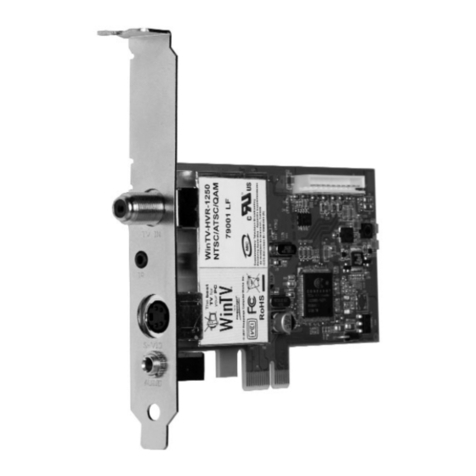
Hauppauge
Hauppauge WinTV-HVR-1265 Quick installation guide
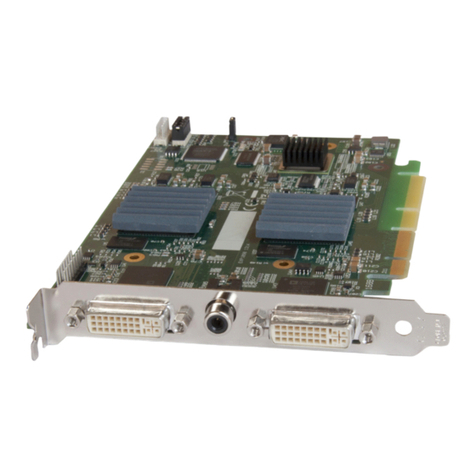
Datapath
Datapath VisionAV-HDAudio/Video Capture Card user manual
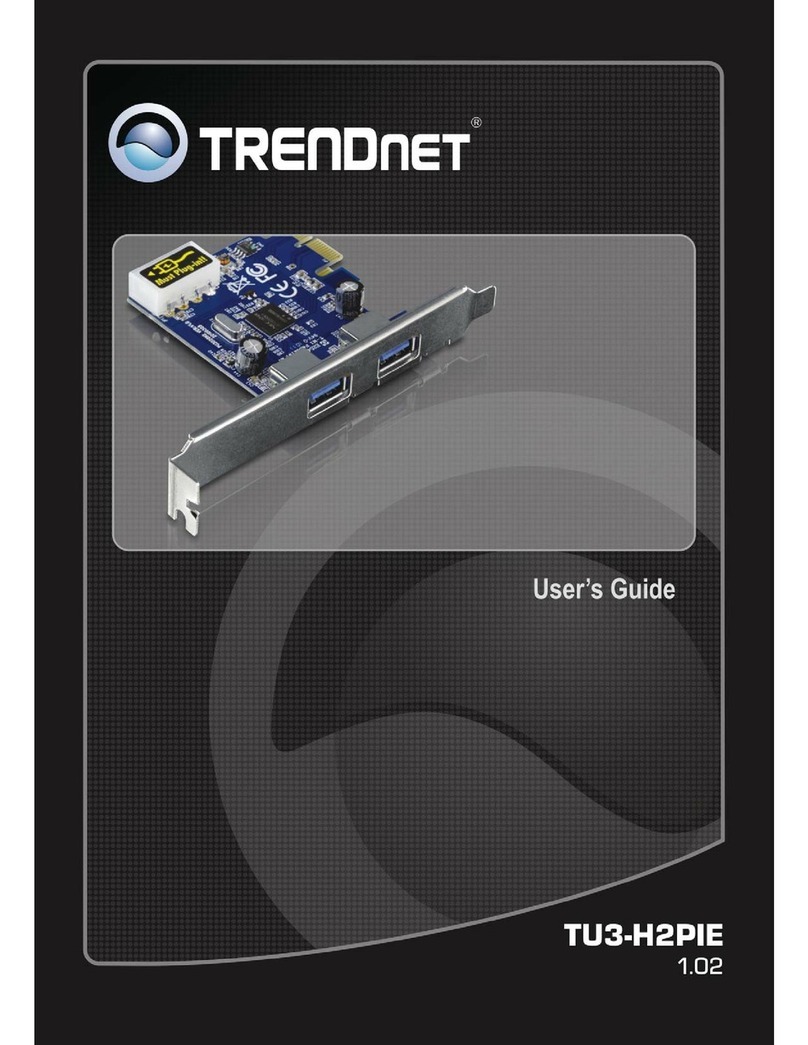
TRENDnet
TRENDnet TU3-H2PIE user guide
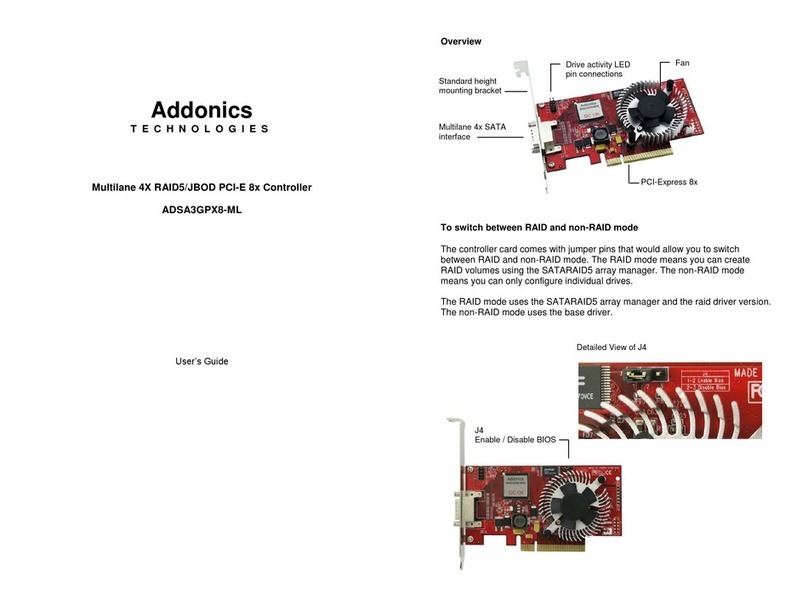
Addonics Technologies
Addonics Technologies ADSA3GPX8-ML user guide
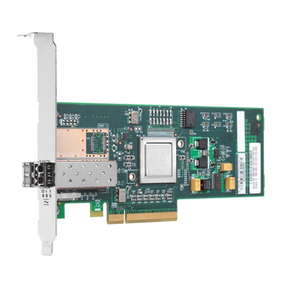
HP
HP StorageWorks fca2384 installation guide
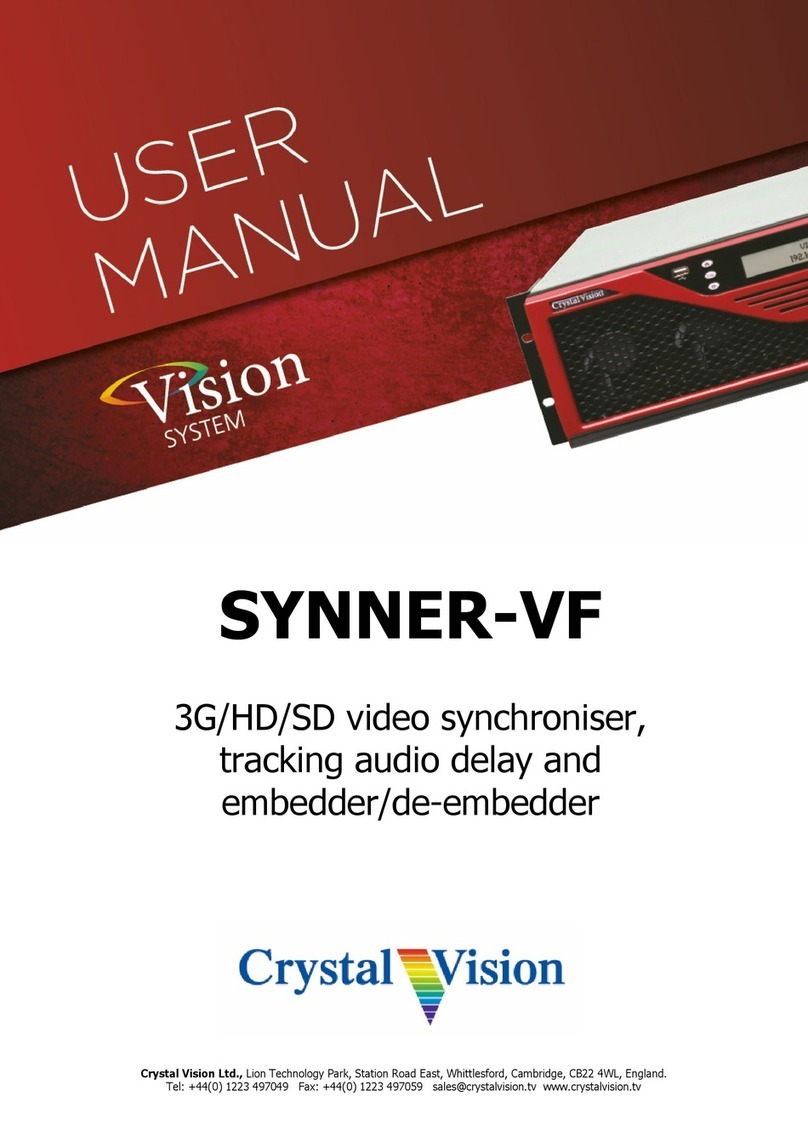
Crystal Vision
Crystal Vision Vision System SYNNER-VF user manual
